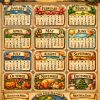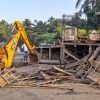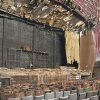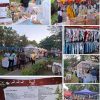Goa is abuzz with excitement as vintage bike and car owners, users, collectors and fans are decking […]
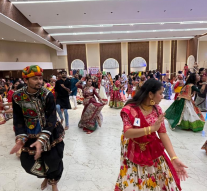
SUR SE SUR MILAO: UNITY IN DIVERSITY
Uncategorized October 31, 2025By Rajan Narayan
Goa’s demographic chart has been shifting and turning from time immemorial, as people from outside took refuge in the state. Recent churning throws up some interesting emerging trends ….
IT IS not the high-profile Bengali community – making a splash during Durga Puja – which is the dominant migrant community in Goa. Nor the Gujaratis – with their dandiya and disco garba – or the ubiquitous Mallus – whose Onam celebration extends over a month.
The “Bongs” and the “Gujjus” account for less than 2 percent of the migrant population in Goa. They have become very visible as they are affluent and are very vocal. However, the Mallu presence, despite all the media and Facebook presence, is only 7 per cent percent of Goa’s “outsiders.”
It may come as a surprise to discover that it is the “bhaiya” from Uttar Pradesh (UP), at 12 per cent % and ever growing, who make up the third largest community after the Kannadiga and the Maharashtrian communities. Most of the bhaiya people are not very visible for they are from the labour class, except for a few notable exceptions like the Goa Medical College (GMC) dean, Dr Jai Prakash Tiwari.
KANNADIGA PEOPLE
HISTORICALLY, the Kannadiga people are the largest linguistic minority accounting for 25 per cent of the migrant population of the state. Contrary to the general perception, Maharashtrians constitute only 19 per cent.
Goa’s first chief minister, Bhausaheb Dayanand Bandodkar, triggered a big influx from across the border when post-Liberation he opened over a thousand Marathi-medium primary schools, which required thousands of teachers. Post-liberation thousands of professionals including engineers and technicians also poured into Goa from Maharashtra.
The construction labour came from Karnataka. Professionals from other states were needed to replace the Portuguese officials, who left after Liberation in 1961. The demand for qualified professionals to cater to the state’s rapid development was met by candidates from the Central Union Public Service Commission (UPSC).
When Goa was a Union Territory, engineers came from all over the country. Almost all the engineers in public works department (PWD) and electricity department are “bhaiyas.” Indeed, most deans and consultants of the GMC as we know are still “outsiders” as popularly perceived in Goa to this day. The Goa Medical College and Hospital did not have postgraduate courses at the time of Liberation.
RELIGIOUS MINORITIES
IN terms of religious minorities, Muslims form the largest group of migrants. At the time of Liberation there were very few Muslims in Goa. Most of them were from the Bohri Muslim trading community – familiar names like Adanis, Veljis, etc, are common. The first lot of Muslim migrants were brought in by the MLA from Mormugao constituency, Shaikh Hassan Haroon, to work in the docks.
The communal riots in Hubli, in 1990, brought a huge wave of Muslim migrants into Goa. Similarly, after the Godhra riots, a large number of Muslims also came for Goa with its Portuguese Christian history is seen as a safe haven. The most recent influx of Muslims to Goa is from Uttar Pradesh.
Most maulanas are from UP. This religious community has taken over the vegetable markets and the meat outlets, with the exception of pork trade. They have become a significant vote-bank of political parties as they now make up 14% of Goa’s population.
The former chief minister and current PWD Minister Digambar Kamat banks on Muslim migrants dwelling in the Moti Dongor slums. Migrants now form over 40% of Goa’s population. To be fair, the majority of them are third and fourth generation migrants. They were attracted to Goa by expanding job opportunities, high wages and, above all, the fact that ethnic Goans shy away from doing the menial jobs which many of them do to eke out a happier livelihood than they would in their own home states.
Interestingly, most barbers in Goa are from Andhra Pradesh or UP. Practically, every worker on the fishing trawlers is from Karnataka or Odisha. The Nepalis, who came as watchmen, have become cooks at Chinese eateries. The Northeastern girls are employed as hairdressers and in casinos and massage parlours.
In the hospitality sector, most general managers (GMs), are from out of Goa. The choice of Goa for retirement and holiday homes creates jobs for plumbers, electricians, AC mechanics and even mobile mechanics. Most service vendors on my speed dial are Muslims. Ironically, much to the concern of Goans and non-Goans, businessmen or investors migration to the coastal state is slowing down.
COST OF LIVING UP
GOA is losing its charm. The cost of living has shot up while infrastructure, growth and opportunities from this has reached a saturation point. Other states are catching up with it. But at the lower end of the market, there is still opportunity. Where else in the country can an unskilled labour command a wage of Rs1,000 per day?

